 W
WFrank Getz Ashbrook was an American mammalogist.
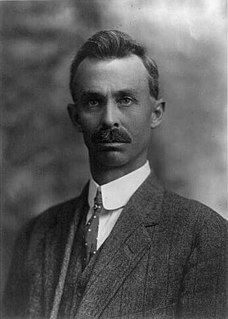 W
WVernon Orlando Bailey (1864–1942) was an American naturalist who specialized in mammalogy. He was employed by the Bureau of Biological Survey, United States Department of Agriculture (USDA). His contributions to the Bureau of Biological Survey numbered roughly 13,000 specimens including many new species. Bailey published 244 monographs and articles during his career with the USDA, and is best known for his biological surveys of Texas, New Mexico, North Dakota, and Oregon.
 W
WDonald Ryder Dickey (1887–1932) was an American ornithologist, mammalogist, and nature photographer. He collected 50,000 specimens and produced 7,500 photographs and moving images of nature subjects. At his death, his collection of bird and mammal specimens was the largest private collection in the United States.
 W
WStephen David Durrant (1902–1975) was an American mammalogist from Salt Lake City, Utah and past president of the American Society of Mammalogists known for his work with pocket gophers of the genus Thomomys and other rodents of the Great Basin. The "foremost mammalogist in Utah," he was professor of zoology at the University of Utah for over 40 years.
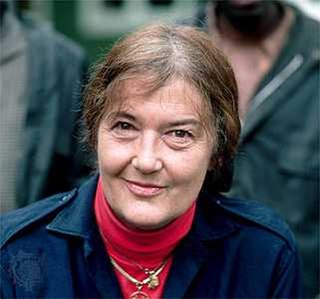 W
WDian Fossey was an American primatologist and conservationist known for undertaking an extensive study of mountain gorilla groups from 1966 until her 1985 murder. She studied them daily in the mountain forests of Rwanda, initially encouraged to work there by paleoanthropologist Louis Leakey. Gorillas in the Mist, a book published two years before her death, is Fossey's account of her scientific study of the gorillas at Karisoke Research Center and prior career. It was adapted into a 1988 film of the same name.
 W
WTheodore Nicholas Gill was an American ichthyologist, mammalogist, malacologist and librarian.
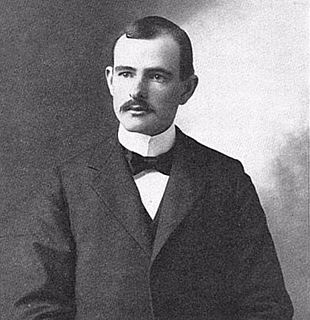 W
WJoseph Grinnell was an American field biologist and zoologist. He made extensive studies of the fauna of California, and is credited with introducing a method of recording precise field observations known as the Grinnell System. He served as the first director of the Museum of Vertebrate Zoology at the University of California, Berkeley from the museum's inception in 1908 until his death.
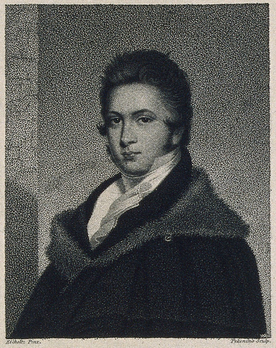 W
WRichard Harlan was an American naturalist, zoologist, herpetologist, physicist, and paleontologist. He was the author of Fauna Americana, published in 1825, and American Herpetology.
 W
WArthur H. Harris is an American mammalogist and paleontologist.
 W
WEdmund Heller was an American zoologist. He was President of the Association of Zoos & Aquariums for two terms, from 1935-1936 and 1937-1938.
 W
WPhilip Hershkovitz was an American mammalogist. Born in Pittsburgh, he attended the Universities of Pittsburgh and Michigan and lived in South America collecting mammals. In 1947, he was appointed a curator at the Field Museum of Natural History in Chicago and he continued to work there until his death. He has published much on the mammals of the Neotropics, particularly primates and rodents, and described almost 70 new species and subspecies of mammals. About a dozen species have been named after him.
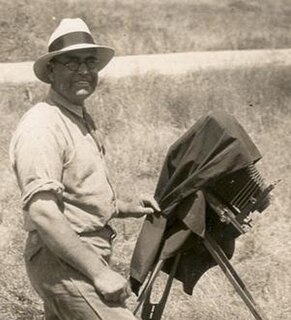 W
WLaurence Markham Huey (1892–1963) was an American zoologist and the Curator of Birds and Mammals at the San Diego Natural History Museum from 1923 to 1961. His main research field was the study of mammals and birds of California and Baja California. He also did field work on mammals and birds in Utah and Arizona, in particular at the Organ Pipe Cactus National Monument.
 W
WJohn Alden Loring was a mammalogist and field naturalist who served with the Bureau of Biological Survey, United States Department of Agriculture, the Bronx Zoological Park, the Smithsonian Institution and numerous expeditions collecting specimens in North America, Europe and Africa. A voluminous and careful traveling collector, Loring was recognized early in his career for 900 specimens collected, prepared and sent to the United States National Museum over a three-month period during an 1898 expedition through Scandinavia and northwestern Europe.
 W
WMarcus Ward Lyon Jr. was an American mammalogist, bacteriologist, and pathologist. He was born into a military family, and demonstrated an early interest in zoology by collecting local wildlife around his father's army posts. He graduated from Brown University in 1897, and continued his studies at George Washington University while working part-time at the United States National Museum (USNM). At the same time, he taught at Howard University Medical School and later George Washington University Medical School. He received his Ph.D. from George Washington University in 1913. In 1919, he and his wife, Martha, moved to South Bend, Indiana to join a newly opened clinic. Prior to moving, Lyon had published many papers on mammalogy, both during and after his tenure at the USNM. In these papers, he had formally described six species, three genera, and one family. Once in South Bend, he began to publish medical studies, too, but continued his work in mammalogy, with a particular focus on the local fauna of Indiana. He published more than 160 papers during his career.
 W
WMartha Ann Maxwell was an American naturalist, artist and taxidermist. She helped found modern taxidermy. Maxwell's pioneering diorama displays are said to have influenced major figures in taxidermy history who entered the field later, such as William Temple Hornaday and Carl Akeley. She was born in Pennsylvania in 1831. Among her many accomplishments, she is credited with being the first woman field naturalist to obtain and prepare her own specimens. She was inducted into the Colorado Women's Hall of Fame in 1985.
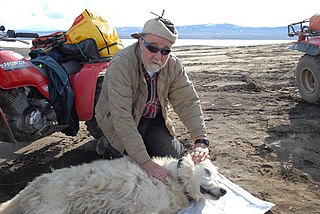 W
WLucyan David Mech, also known as Dave Mech, is an American biologist specializing in the study of wolves. He is a senior research scientist for the U.S. Geological Survey and an adjunct professor at the University of Minnesota. He has researched wolves since 1958 in locations including northern Minnesota, Isle Royale, Alaska, Yellowstone National Park, Ellesmere Island, and Italy.
 W
WClinton Hart Merriam was an American zoologist, mammalogist, ornithologist, entomologist, ecologist, ethnographer, geographer, and naturalist.
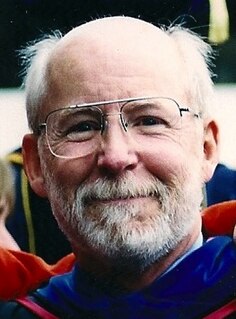 W
WJames Lloyd Patton, is an American evolutionary biologist and mammalogist. He is emeritus professor of integrative biology and curator of mammals at the Museum of Vertebrate Zoology, UC Berkeley and has made extensive contributions to the systematics and biogeography of several vertebrate taxa, especially small mammals.
 W
WOliver Payne Pearson, or "Paynie" to many that knew him, was an American zoologist and ecologist. Over a very active 50-year career, he served as professor of zoology at UC Berkeley and curator of mammals at the Museum of Vertebrate Zoology. Pearson is best known for his work on the role of predation on vole demography and population cycles, and for his piercing contributions to the biology of South American mammals, but his earlier studies on reproductive and physiological ecology are highly regarded as well.
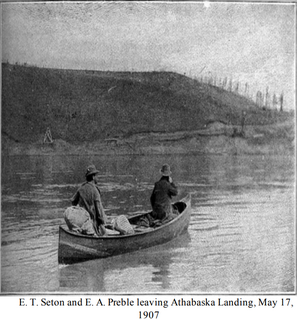 W
WEdward Alexander Preble was an American naturalist and conservationist. He is noted for work in studying birds and mammals of the Pacific Northwest. He also acted as an editor for nature magazines.
 W
WSue Savage-Rumbaugh is a psychologist and primatologist most known for her work with two bonobos, Kanzi and Panbanisha, investigating their linguistic and cognitive abilities using lexigrams and computer-based keyboards. Originally based at Georgia State University's Language Research Center in Atlanta, Georgia, she worked at the Iowa Primate Learning Sanctuary in Des Moines, Iowa from 2006 until her departure in November 2013. She currently sits on the Board of Directors of Bonobo Hope.
 W
WDavid James Schmidly is an American academic administrator and zoologist who served as president of Texas Tech University, Oklahoma State University, and the University of New Mexico. On April 22, 2011, Schmidly announced his decision to retire as UNM's President at the end of his five-year contract in 2012, citing health concerns and his desire to end his career working in his academic field of natural history and mammalogy.
 W
WViola Shelly Schantz (1895–1977) was an American biologist and zoologist. She worked for the United States Fish and Wildlife Service from 1918 to 1961, as a biological aide, biologist and systematic zoologist. Stationed at the Smithsonian Institution throughout her career, she was the curator for the North American mammal collection in the National Museum of Natural History.
 W
WGeorge Gaylord Simpson was a US paleontologist. Simpson was perhaps the most influential paleontologist of the twentieth century, and a major participant in the modern synthesis, contributing Tempo and Mode in Evolution (1944), The Meaning of Evolution (1949) and The Major Features of Evolution (1953). He was an expert on extinct mammals and their intercontinental migrations. He anticipated such concepts as punctuated equilibrium and dispelled the myth that the evolution of the horse was a linear process culminating in the modern Equus caballus. He coined the word hypodigm in 1940, and published extensively on the taxonomy of fossil and extant mammals. Simpson was influentially, and incorrectly, opposed to Alfred Wegener's theory of continental drift.
 W
WFrank Stephens (1849–1937) was an American naturalist and the first director of the San Diego Natural History Museum. He was considered the pioneer naturalist of the Southwest, studying the mammals and birds of California, Arizona, and Baja California. His personal specimen collection of 2,000 birds and mammals, donated in 1910, was the foundation of the San Diego Natural History Museum's Birds & Mammals Department, now a major resource on bird and mammal species of western North America, including Baja California.
 W
WRichard George Van Gelder was a prominent mammalogist who served as the Curator of Mammalogy for the American Museum of Natural History in New York for more than twenty-five years.